

Articles
How To Keep Basement Warm
Modified: October 18, 2024
Learn effective strategies and tips to keep your basement warm during colder months. Read our informative articles to create a cozy and comfortable living space.
(Many of the links in this article redirect to a specific reviewed product. Your purchase of these products through affiliate links helps to generate commission for Storables.com, at no extra cost. Learn more)
Introduction
Keeping your basement warm is crucial for maintaining a comfortable and functional living space. Whether you use your basement as a living area, storage space, or a home office, ensuring that it is properly heated is essential. Not only does a warm basement provide a welcoming environment, but it also helps prevent issues such as moisture buildup, mold growth, and energy loss.
In this article, we will explore various methods and techniques to help you keep your basement warm throughout the year. From insulation and weatherstripping to heating options and managing moisture, we will cover everything you need to know to create a cozy and energy-efficient basement.
So, if you’re tired of walking into a chilly and unwelcoming basement, read on to discover the strategies and tips to make your basement a warm and inviting space.
Key Takeaways:
- Proper insulation, weatherstripping, and heating options are essential for maintaining a warm and energy-efficient basement. Managing moisture and ensuring proper drainage are crucial for a healthy and comfortable living space.
- Implementing effective ventilation techniques and utilizing dehumidifiers are key strategies for creating a drier and healthier basement environment. Regular maintenance and monitoring of humidity levels are essential for optimal performance.
Read more: How To Keep A Sunroom Warm In Winter
Importance of Keeping the Basement Warm
Why is it so crucial to keep your basement warm? The answer lies in the many benefits that a warm basement provides. Let’s explore some of the key reasons why maintaining a warm basement is important:
- Comfort: A warm basement ensures a comfortable environment for you and your family to enjoy. Whether you use it as a living space, entertainment area, or simply a place to relax, a warm basement makes it more inviting and enjoyable.
- Energy Efficiency: By properly insulating and heating your basement, you prevent heat loss and improve energy efficiency throughout your entire home. This can lead to lower energy bills and reduced carbon footprint.
- Moisture Control: Cold basements are susceptible to moisture problems such as condensation, dampness, and mold growth. By keeping the basement warm, you can prevent these issues and maintain a dry and healthy living space.
- Extended Living Space: A warm basement can significantly expand your living space. Whether you need an extra bedroom, a home office, or a playroom for your kids, a warm basement provides versatile and functional space.
- Protects Belongings: If you use your basement for storage, keeping it warm is vital to protect your belongings. Items like clothing, furniture, and electronics can be damaged by extreme cold temperatures and humidity.
- Improved Home Value: A well-maintained and warm basement adds value to your home. When it comes time to sell, a comfortable living space in the basement can be an attractive selling point for potential buyers.
Now that we understand the importance of keeping the basement warm, let’s explore some effective strategies and techniques to achieve optimal warmth and comfort.
Insulation
One of the most effective ways to keep your basement warm is through proper insulation. Insulation helps to create a thermal barrier, preventing the transfer of heat between the basement and the rest of the house. Here are some key points to consider for insulating your basement:
- Basement Walls: Insulating the basement walls is a crucial step in improving energy efficiency and maintaining warmth. You can use materials such as fiberglass batt insulation, rigid foam insulation, or spray foam insulation. Be sure to fill in any gaps or cracks to create an airtight seal.
- Basement Ceiling: If you have a finished basement, insulating the basement ceiling helps to minimize heat loss. Using insulation batts or blown-in insulation between the floor joists can significantly improve the warmth of the space above.
- Basement Floors: While insulating basement floors may not be as common, it can be beneficial in some cases. Insulating the floor helps to prevent cold air from seeping up into the basement and can be particularly useful if your basement is above an unconditioned crawl space or garage.
- Foundation: Insulating the foundation walls can also contribute to keeping your basement warm. By adding insulation to the exterior of the foundation or installing insulation panels along the interior, you can minimize heat loss and increase overall comfort.
- Windows and Doors: Don’t forget to insulate around windows and doors to prevent drafts and heat loss. Weatherstripping and caulking can help seal any gaps or leaks, keeping the warm air inside the basement.
When choosing insulation materials, consider their R-value. The higher the R-value, the better the insulation’s ability to resist heat transfer. Consulting with a professional can help determine the best insulation options for your specific basement and climate.
Remember, proper insulation not only keeps your basement warm but also contributes to energy savings and a more comfortable living environment.
Weatherstripping
In addition to insulation, weatherstripping is an effective method to prevent drafts and air leakage in your basement. Weatherstripping involves sealing gaps around windows, doors, and any other openings to keep the warm air in and the cold air out. Here are some tips for weatherstripping your basement:
- Windows and Doors: Check for any gaps or cracks around windows and doors that may be allowing cold air to enter. Use weatherstripping materials such as adhesive foam tape, door sweeps, or draft stoppers to seal these areas. Make sure to choose weatherstripping that is suitable for the specific type of window or door.
- Electrical Outlets and Switches: Electrical outlets and switches on the basement walls can also be sources of air leakage. Install foam gaskets or insulating pads behind the cover plates to create a barrier against drafts.
- Pipes and Wires: Seal any openings around pipes and wires that penetrate the basement walls or ceiling. Use caulk or expandable foam to fill in gaps and prevent cold air infiltration.
- Chimneys and Vents: Ensure that chimneys, vents, and other openings to the outside are properly sealed. Use appropriate materials, such as chimney caps or vent covers, to block drafts and prevent heat loss.
- Basement Hatch or Bulkhead: If you have a basement hatch or bulkhead door, make sure it is weatherstripped and well-insulated to prevent cold air from entering. Apply weatherstripping around the edges and use insulation panels to cover any gaps.
Regularly inspect your weatherstripping and replace any worn-out or damaged materials to maintain its effectiveness. Properly sealed windows, doors, and openings will not only keep your basement warmer but also improve energy efficiency and reduce heating costs.
Window Treatments
Window treatments play a significant role in maintaining a warm and cozy basement. They not only enhance the aesthetics of the space but also help to insulate against cold drafts. Here are some window treatment options to consider:
- Thermal Curtains or Drapes: Installing thermal curtains or drapes on your basement windows can provide an extra layer of insulation. These curtains are designed with a thermal lining that helps to block cold air and retain warmth inside the room. Look for curtains with a high R-value to maximize their effectiveness.
- Cellular Shades: Cellular shades, also known as honeycomb shades, are another excellent option for insulating basement windows. These shades feature a unique cellular design that traps air, creating a barrier against heat loss. Cellular shades come in various styles and can be customized to fit your windows perfectly.
- Window Film: Applying window film is a cost-effective way to improve insulation and reduce heat transfer through your basement windows. Window film creates a reflective barrier that helps to keep the warm air inside and block out cold drafts. Additionally, some window films offer UV protection and privacy benefits.
- Window Insulation Kits: If you have drafty windows, consider using window insulation kits. These kits typically include clear plastic film that can be applied to the interior of your windows using double-sided tape. When properly installed and sealed, the film creates a layer of insulation that helps to keep your basement warm.
- Window Blinds: While window blinds may not provide as much insulation as curtains or shades, they can still help to reduce heat loss. Close the blinds during colder periods to create a barrier against cold air. Opt for thicker and heavier blinds for improved insulation.
When choosing the right window treatments for your basement, consider both insulation and aesthetics. Select options that align with your personal style while providing the necessary insulation to keep your basement warm and comfortable.
Remember to keep your window treatments closed during colder periods to maximize their effectiveness in retaining warmth. Additionally, regular maintenance and cleaning of window treatments will ensure their longevity and optimal performance.
Read more: How To Keep Toilet Seat Warm
Ventilation
Ventilation is an important aspect of maintaining a warm and healthy basement. Proper airflow helps to control moisture, prevent humidity buildup, and improve overall air quality. Here are some ventilation strategies to consider:
- Natural Ventilation: If your basement has windows, open them periodically to allow fresh air to circulate. This can help reduce stale air and odors while promoting better air quality. However, be cautious of outdoor temperature and weather conditions to avoid introducing cold air into the basement.
- Exhaust Fans: Installing exhaust fans in your basement can be beneficial for removing excess moisture and maintaining proper ventilation. Consider installing a bathroom-style exhaust fan or a dedicated basement ventilation system to help control humidity levels.
- Carbon Monoxide Detector: It’s essential to have a carbon monoxide detector in your basement, especially if you have fuel-burning appliances or equipment. Carbon monoxide is a silent and potentially deadly gas that can build up in poorly ventilated areas. Regularly check and replace the batteries in your carbon monoxide detector to ensure it is working properly.
- Air Purifiers: Consider using an air purifier in your basement to improve air quality. Air purifiers help to remove dust, allergens, and other contaminants from the air, creating a healthier living environment. Look for purifiers with HEPA filters for optimal filtration.
- Humidity Control: Managing humidity levels is essential for a warm and comfortable basement. Invest in a hygrometer to monitor the humidity and use a dehumidifier if necessary. By keeping humidity levels between 30% and 50%, you can prevent moisture problems and condensation.
Remember that balance is key when it comes to basement ventilation. While you want to ensure proper airflow and minimize moisture, you also need to maintain a warm and cozy environment. Adjust ventilation strategies accordingly based on the specific needs of your basement and your climate.
By incorporating effective ventilation techniques, you can create a healthier, more comfortable living space in your basement while maintaining proper moisture control.
Heating Options
When it comes to keeping your basement warm, choosing the right heating option is essential. Here are some popular heating options to consider:
- Electric Space Heaters: Electric space heaters are a convenient and portable option for heating small areas in your basement. They are cost-effective and come in various sizes and designs to suit your needs. Look for energy-efficient models with safety features like overheating protection and tip-over switches.
- Radiant Floor Heating: Radiant floor heating is an excellent option for larger basement spaces. It involves installing heated pipes or electric heating mats beneath the floor, providing even and consistent warmth. While it requires professional installation and upfront costs, radiant floor heating offers long-term comfort and energy efficiency.
- Pellet Stoves: Pellet stoves are an alternative heating option that uses compressed wood pellets as fuel. They provide both warmth and ambiance, making them a popular choice for basements. Pellet stoves require a venting system and regular maintenance, but they offer efficient heating and can be a sustainable option.
- Ductless Heat Pumps: Ductless heat pumps, also known as mini-split systems, are versatile heating solutions that can effectively warm your basement. They consist of an outdoor unit connected to one or more indoor units. Ductless heat pumps provide both heating and cooling and are energy efficient, quiet, and easy to install.
- Fireplace or Wood-Burning Stove: If you already have a fireplace or wood-burning stove in your basement, utilizing it can be a cozy and efficient heating option. Regular maintenance and following safety guidelines are essential for safe operation. Consider using a fireplace insert or stove fan to maximize heat distribution.
When choosing a heating option, consider factors such as the size of your basement, available space, budget, and energy efficiency. It’s also important to ensure proper ventilation and comply with any local regulations or building codes.
Combining appropriate insulation, weatherstripping, and heating methods will help you achieve optimal warmth and comfort in your basement. Evaluate your specific needs and consult with professionals to determine the best heating option for your basement.
Electric Space Heaters
Electric space heaters are a popular and convenient option for heating small areas in your basement. They offer portability and ease of use, allowing you to quickly warm up specific zones without the need for complex installation or ventilation. Here are some key points to know about electric space heaters:
- Types of Electric Space Heaters: There are various types of electric space heaters available, including fan-forced heaters, ceramic heaters, radiant heaters, and oil-filled heaters. Each type has its own benefits and features, so choose the one that best suits your needs.
- Efficiency: Electric space heaters are known for their efficiency, as they convert nearly all the electricity they consume into heat. However, keep in mind that using a space heater as the sole source of heating for a larger area may result in higher energy consumption and costs.
- Safety Features: Look for electric space heaters with built-in safety features, such as tip-over protection and overheating protection. These safety mechanisms automatically shut off the heater if it is accidentally knocked over or if it reaches unsafe temperatures, reducing the risk of accidents and fire hazards.
- Positioning and Usage: Place the electric space heater on a stable, flat surface, away from flammable materials and furniture. Do not leave the heater unattended, and avoid using extension cords or power strips as they can overheat. Follow the manufacturer’s instructions and safety guidelines for optimum usage.
- Zoning and Supplemental Heat: Electric space heaters are ideal for zoning and providing supplemental heat in your basement. Instead of heating the entire basement, you can focus the heat on the areas you use the most, saving energy and money. This allows you to create a comfortable environment while keeping other parts of the basement cooler.
- Noise Level: Consider the noise level of the electric space heater, especially if you plan to use it in areas where quiet is important, such as a home office or bedroom. Look for models that operate quietly to avoid any disturbances.
Before purchasing an electric space heater, assess the size of your basement and the specific areas you want to heat. Consider the heater’s wattage and heating capacity to ensure it is suitable for the space. Additionally, read customer reviews and compare different models to find the one that best fits your needs and budget.
Remember, while electric space heaters can offer immediate warmth and flexibility, it’s important to use them responsibly and safely to prevent accidents and ensure efficient heating in your basement.
Radiant Floor Heating
Radiant floor heating is a highly effective and luxurious option for keeping your basement warm. This heating system involves installing heated pipes or electric heating mats beneath the floor surface, providing even and consistent warmth throughout the room. Here are some key points to know about radiant floor heating:
- Types of Radiant Floor Heating: There are two main types of radiant floor heating: hydronic (water-based) and electric. Hydronic systems use hot water that circulates through the pipes, while electric systems use heating mats or cables. Both types offer efficient and comfortable heating.
- Installation Process: Radiant floor heating requires professional installation, as it involves laying out the heating elements underneath the floor. For hydronic systems, a boiler or a water heater is needed to heat the water. Electric systems require a dedicated electrical circuit. The installation process will depend on your specific basement and flooring materials.
- Even Heat Distribution: One of the major advantages of radiant floor heating is its ability to provide even heat distribution. As the warm air rises from the floor, it eliminates cold spots and creates a comfortable environment from the ground up. This makes it an ideal heating solution for basement areas with tile, stone, or concrete floors.
- Energy Efficiency: Radiant floor heating is known for its energy efficiency. Due to the floor’s large surface area, it can effectively transfer heat into the room. This allows for more efficient heating compared to heating systems that rely on forced air circulation. Some hydronic systems can also be paired with solar or geothermal energy sources for further energy savings.
- Design Flexibility: Radiant floor heating offers design flexibility, as it eliminates the need for visible heating units such as radiators or baseboard heaters. This allows for more freedom in furniture placement and interior design choices. Without radiators or vents, the basement space can also feel more open and spacious.
- Comfort and Health Benefits: Radiant floor heating provides a comfortable heating experience, as it doesn’t create drafts or circulate allergens like forced-air systems. It also helps to reduce dust mites and other airborne particles, improving indoor air quality and reducing the potential for allergies or respiratory issues.
While radiant floor heating provides numerous benefits, it is important to consider the costs and feasibility for your specific basement. Consult with a professional to assess your basement’s suitability for radiant floor heating and to determine the best system for your needs.
While the upfront installation cost may be higher compared to other heating options, radiant floor heating offers long-term comfort, energy efficiency, and a luxurious touch to your basement living space.
Seal any drafts or cracks in the basement walls and floors to prevent cold air from entering. This will help to keep the basement warm and reduce heat loss.
Read more: How To Keep Floor Warm In Winter
Pellet Stoves
Pellet stoves are a popular and efficient heating option for keeping your basement warm. These stoves use compressed wood or biomass pellets as fuel to provide heat. Pellet stoves offer a unique combination of warmth, ambiance, and sustainability. Here’s what you need to know about using pellet stoves in your basement:
- Fuel Source: Pellet stoves burn small, specially designed pellets made from compressed wood or biomass materials. These pellets are highly efficient and produce minimal ash compared to traditional wood-burning stoves. Pellets are widely available, and their use contributes to reducing reliance on fossil fuels.
- Efficiency: Pellet stoves are known for their high efficiency in converting fuel into heat. They can achieve efficiency ratings of over 80%, which means more heat is produced and less wasted. This translates into cost savings and reduces the environmental impact of heating your basement.
- Installation: Proper installation of a pellet stove in the basement is important for safety and efficiency. It requires a venting system, which can be through a chimney or a specially designed vent pipe. Consult with a professional to ensure the stove is installed correctly and meets local building codes and regulations.
- Heat Output: Pellet stoves can generate a significant amount of heat, making them suitable for medium to large-sized basements. They typically come with adjustable heat settings and blowers to distribute the warm air. Some models even offer programmable thermostats for precise temperature control.
- Automatic Operation: Many modern pellet stoves feature automatic ignition and hopper systems. The ignition system ignites the pellets, and the hopper automatically feeds the pellets into the firebox as needed. This makes pellet stoves convenient and easy to use, requiring minimal maintenance and attention.
- Aesthetics: In addition to providing warmth, pellet stoves can enhance the ambiance of your basement. They offer a cozy and rustic feel, with a viewing window that allows you to enjoy the mesmerizing flames. Pellet stoves come in various styles and designs, allowing you to choose one that complements your basement décor.
It’s important to note that pellet stoves do require regular cleaning and maintenance to ensure optimal performance and safety. This includes cleaning the ash pan and chimney or vent pipe, as well as regularly inspecting and cleaning the components of the stove.
Before choosing a pellet stove for your basement, consider factors such as the size of the space, the availability and cost of pellets in your area, and your budget. Pellet stoves provide efficient heating, eco-friendly operation, and a cozy atmosphere, making them a popular choice for homeowners looking to keep their basements warm and inviting.
Ductless Heat Pumps
Ductless heat pumps, also known as mini-split systems, are versatile and efficient heating options for keeping your basement warm. These systems consist of an outdoor unit connected to one or more indoor units, providing both heating and cooling capabilities. Here’s what you need to know about ductless heat pumps:
- Heating and Cooling: Ductless heat pumps offer both heating and cooling functions, making them a year-round heating solution for your basement. They use advanced technology to extract heat from the outdoor air and transfer it inside during the colder months, while reversing the process for cooling during warmer months.
- Energy Efficiency: Ductless heat pumps are highly energy-efficient, as they don’t rely on ductwork to distribute air. This eliminates the energy losses associated with traditional forced-air systems. Additionally, many models feature inverter-driven compressors that optimize energy usage based on the heating needs, resulting in further energy savings.
- Zoning and Control: Ductless heat pumps allow for precise temperature control and zoning. Each indoor unit can be independently controlled, allowing you to set different temperatures in different areas of your basement. This provides personalized comfort and the ability to heat only the spaces that are in use, saving energy and reducing heating costs.
- Easy Installation: Installing ductless heat pumps is relatively easy compared to other heating systems, as they do not require any ductwork. The outdoor and indoor units are connected by a small refrigerant line. The absence of ducts makes ductless heat pumps a great option for basements without existing ductwork or where it would be impractical to install it.
- Air Quality: Ductless heat pumps improve indoor air quality by reducing the circulation of dust, allergens, and other airborne particles. They typically come equipped with advanced filtration systems that remove contaminants from the air, making your basement a healthier and more comfortable space.
- Noise Level: Ductless heat pumps operate quietly, making them suitable for areas where noise may be a concern, such as bedrooms or home offices. The outdoor unit generates minimal noise, and the indoor units use advanced technology to operate quietly, ensuring a peaceful environment.
When installing a ductless heat pump in your basement, it’s important to consult with a professional HVAC contractor. They can evaluate your basement space, determine the right size and number of indoor units, and ensure proper installation for optimum performance.
With their energy efficiency, zoning capabilities, and year-round heating and cooling functions, ductless heat pumps provide excellent comfort and convenience for keeping your basement warm.
Insulating Pipes
Insulating pipes in your basement is an important step to prevent heat loss and maintain the warmth of your space. Uninsulated pipes can be a significant source of heat transfer, leading to energy waste and potentially freezing during cold weather. Here are some key points to know about insulating pipes in your basement:
- Types of Pipes to Insulate: It’s important to identify the pipes in your basement that should be insulated. This typically includes hot water pipes, heating system pipes, and any other pipes that carry water or fluids. Insulating cold water pipes can also help prevent condensation and reduce the risk of moisture-related issues.
- Materials for Pipe Insulation: Pipe insulation is available in various materials, including foam, fiberglass, and rubber. Foam pipe insulation is cost-effective and easy to install, while fiberglass offers better insulation properties. Rubber insulation is more flexible and resistant to moisture, making it suitable for areas with high humidity or condensation.
- Benefits of Pipe Insulation: Insulating pipes in your basement offers several benefits. Firstly, it helps to prevent heat loss, which can reduce energy consumption and lower heating costs. Secondly, it protects pipes from freezing during cold weather, which can lead to expensive repairs and water damage. Insulation also helps to reduce noise transmission from pipes and prevents condensation buildup.
- Installation Process: Insulating pipes is a relatively simple process that can be done as a DIY project. Measure the length and diameter of the pipes to determine the appropriate size of insulation. Cut the insulation to fit the pipes and secure it using adhesive or cable ties. Pay attention to ensuring a snug fit without any gaps or areas left uninsulated.
- Additional Tips: When insulating pipes, it’s important to pay attention to areas where pipes may be more vulnerable to heat loss, such as near exterior walls or unheated areas. You can use insulation wrap or sleeves to provide additional insulation in these areas. Additionally, consider insulating pipe fittings and valves to ensure complete coverage and insulation.
By insulating the pipes in your basement, you can minimize heat loss, improve energy efficiency, and protect your pipes from freezing during colder months. This simple and cost-effective measure can go a long way in maintaining a warm and well-insulated basement space.
Sealing Cracks and Gaps
Sealing cracks and gaps in your basement is crucial for preventing cold air infiltration and maintaining a warm and comfortable environment. Even small cracks and gaps can allow drafts to enter, leading to heat loss and energy waste. Here are some important points to consider when sealing cracks and gaps in your basement:
- Identification: Begin by inspecting your basement for any visible cracks or gaps in the walls, floors, windows, doors, and other areas. Use a flashlight to help identify hard-to-reach areas or hidden gaps that may be contributing to drafts.
- Caulking: Caulking is a common method used to seal small cracks and gaps. Choose a high-quality, waterproof caulking material suitable for your specific needs. Apply caulking along cracks, gaps around windows and doors, and any other areas where air may be infiltrating. Smooth the caulking with a putty knife or your finger for a neat finish.
- Weatherstripping: Weatherstripping is effective for sealing gaps between moving parts, such as windows and doors. Install weatherstripping around doors and windows to create a tight seal and prevent air leakage. There are different types of weatherstripping available, such as adhesive-backed foam tape, V-strip, or door sweeps. Choose the appropriate type for each specific application.
- Expanding Foam Sealant: Expanding foam sealant is useful for sealing larger gaps or areas where other methods may not be sufficient. This type of sealant expands when applied and fills the gaps completely, creating an airtight seal. Exercise caution when using expanding foam sealant, as it can expand aggressively and cause damage if applied improperly.
- Insulation Foam Boards: In areas where there are larger gaps or openings, such as around exposed pipes or electrical wiring, insulation foam boards can be used to create a barrier. Cut the insulation foam boards to fit the space and secure them in place using adhesive or brackets. This helps to prevent air infiltration and adds insulation value to those areas.
- Regular Maintenance: It’s important to periodically inspect and maintain the seals and caulking in your basement. Over time, caulking may shrink or crack, and weatherstripping may wear out. Replace any damaged or ineffective seals to ensure their effectiveness in preventing air leakage.
Sealing cracks and gaps is a simple and cost-effective way to improve energy efficiency and maintain a warmer basement. By creating a barrier against air infiltration, you can prevent drafts, heat loss, and energy waste, resulting in a more comfortable and energy-efficient living space.
Read more: How To Keep An Attic Warm In Winter
Managing Moisture
Managing moisture in your basement is crucial for maintaining a warm and healthy environment. Excess moisture can lead to issues such as mold growth, musty odors, and damage to the structure and belongings. Here are some key strategies for effectively managing moisture in your basement:
- Dehumidifiers: Dehumidifiers play a vital role in controlling moisture levels in the basement. They remove excess humidity from the air, helping to prevent condensation and mold growth. Choose a dehumidifier with the appropriate capacity for your basement size and ensure regular maintenance, such as emptying the water collection tank and cleaning or replacing the filter as needed.
- Proper Drainage: Ensuring proper drainage around your home is essential for managing moisture. Water should be directed away from the foundation to prevent water seepage into the basement. Make sure your gutters are clean and functioning properly, and consider installing downspout extensions or a French drain system if needed.
- Ventilation: Proper ventilation is key to reducing moisture buildup in the basement. As mentioned earlier, utilize natural ventilation by occasionally opening basement windows to allow fresh air to circulate. Exhaust fans can also be installed to expel moist air and promote airflow, especially in areas prone to high humidity, such as bathrooms or laundry rooms.
- Insulating Pipes: Insulating the pipes in your basement not only helps prevent heat loss but also reduces the risk of condensation. Insulation acts as a barrier, preventing warm air from coming into contact with cold pipes and minimizing moisture buildup on their surfaces.
- Sealing Cracks and Gaps: As mentioned earlier, sealing cracks and gaps is not only beneficial for preventing drafts but also for reducing the potential for moisture infiltration. Water vapor can enter through even the smallest openings, leading to increased humidity levels. Properly sealing cracks and gaps helps to maintain a drier basement environment.
- Sump Pump: If your basement experiences water infiltration or has a history of flooding, installing a sump pump can help manage and remove excess water. A sump pump collects and pumps out water that accumulates in a pit, preventing it from causing damage to your basement and minimizing the risk of mold growth.
- Moisture Barriers: Consider using moisture barriers, such as waterproofing paints or coatings, on the walls and floors of your basement. These products create a protective barrier that prevents water vapor from seeping into the space. Consult with professionals to determine the most appropriate moisture barrier solution for your specific basement needs.
By implementing these moisture management strategies, you can create a drier and healthier basement environment. Remember to regularly monitor your basement for any signs of moisture or water intrusion and take prompt action to address and resolve any issues.
Dehumidifiers
Dehumidifiers are essential appliances for managing moisture levels in your basement. They help regulate humidity by removing excess moisture from the air, creating a drier and more comfortable environment. Here’s what you need to know about using dehumidifiers in your basement:
- How Dehumidifiers Work: Dehumidifiers work by drawing in humid air, cooling it, and condensing the moisture. The extracted water is collected in a reservoir, which needs to be emptied periodically. The dry air is then released back into the room, reducing humidity levels.
- Benefits of Using Dehumidifiers: There are several benefits to using dehumidifiers in your basement. Firstly, they help prevent excess moisture buildup, which can lead to mold growth, musty odors, and damage to furniture and belongings. Secondly, dehumidifiers can aid in reducing dust mites and allergens, providing cleaner air for those who suffer from allergies or respiratory conditions. Lastly, by reducing humidity levels, dehumidifiers contribute to a more comfortable living space by reducing that sticky feeling and the risk of condensation on windows.
- Choosing the Right Size: When selecting a dehumidifier for your basement, consider the size and square footage of the space. Dehumidifiers are rated based on the amount of moisture they can remove in a given time, usually measured in pints. Larger basements may require a higher-capacity dehumidifier to effectively control humidity levels.
- Placement: Place the dehumidifier in a centralized location in your basement to ensure maximum coverage. Ensure that there is proper airflow around the unit and avoid blocking the air intake or exhaust vents. Placing the dehumidifier near areas where moisture is concentrated, such as laundry areas or crawl spaces, can be especially beneficial.
- Maintenance: Regular maintenance is important to keep your dehumidifier functioning optimally. Clean the air filters regularly to prevent them from becoming clogged with debris. Empty the water reservoir as needed and ensure proper drainage if your dehumidifier has a continuous drainage option. Some models also have indicators that alert you when the reservoir is full.
- Energy Efficiency: Look for dehumidifiers with an ENERGY STAR certification, as these units are designed to operate efficiently and consume less energy. Consider features such as adjustable humidity settings, automatic shut-off, and programmable timers, which help conserve energy and optimize performance.
- Additional Tips: Dehumidifiers should be used in conjunction with other moisture management techniques, such as proper ventilation, sealing cracks and gaps, and ensuring proper drainage. It’s also essential to monitor humidity levels with a hygrometer to ensure that they remain within the recommended range of 30% to 50% in your basement.
By properly utilizing dehumidifiers in your basement, you can effectively control moisture levels, prevent mold growth, and create a healthier and more comfortable living space. Choose a dehumidifier that suits your basement’s needs, practice regular maintenance, and keep an eye on humidity levels to ensure optimal performance.
Proper Drainage
Proper drainage is essential for managing moisture in your basement and preventing water-related issues. Effective drainage helps to redirect water away from your home, reducing the risk of water seepage and moisture buildup. Here are some key points to consider for maintaining proper drainage in your basement:
- Gutters and Downspouts: Ensure that your gutters and downspouts are clean and functioning properly. Gutters should be free of debris to allow smooth water flow. Downspouts should extend at least 6 feet away from the foundation, directing water away from your home.
- Grade and Slope: The ground around your home should be properly graded and sloped to prevent water from pooling near the foundation. The slope should be directed away from the house to encourage water runoff. If the grading is inadequate, you may need to re-grade the soil or use landscaping techniques to divert water away from your home.
- French Drains: French drains are highly effective in managing groundwater and preventing water intrusion in basements. A French drain consists of a perforated pipe surrounded by gravel or rock. This system collects and diverts water away from the foundation, reducing hydrostatic pressure and helping to keep your basement dry.
- Window Wells: If your basement has windows, ensure that the window wells are properly drained and free of debris. Install window well covers to prevent water accumulation and blockage. Regularly inspect and clean the window wells to maintain proper drainage and prevent water seepage into the basement.
- Sump Pump: Installing a sump pump is a proactive measure to manage excess water and prevent basement flooding. A sump pump collects water from the basement and pumps it out and away from your home. Regular maintenance and checks are essential to ensure that the sump pump is in good working condition and to address any issues promptly.
- Absorbent Landscaping: Consider using absorbent landscaping materials, such as gravel or mulch, around your home’s perimeter. These materials help absorb and retain water, reducing runoff and directing it away from the foundation. Avoid using impermeable materials that can hinder proper drainage.
- Professional Assessment: If you’re experiencing persistent or significant drainage issues in your basement, it may be beneficial to consult with a professional. They can assess your basement’s specific needs, identify any underlying drainage problems, and recommend appropriate solutions.
By ensuring proper drainage around your home, you can effectively manage moisture levels and reduce the risk of water seepage into your basement. Regularly inspect and maintain gutters, downspouts, and other drainage systems to ensure they remain in good working order. Taking these proactive measures will help safeguard your basement from water-related damage and maintain a dry and comfortable living space.
Conclusion
Keeping your basement warm is essential for creating a comfortable and functional living space. By implementing the strategies and techniques discussed in this article, you can effectively maintain a warm basement while addressing moisture-related issues. Here’s a summary of the key points covered:
Insulation plays a crucial role in preventing heat loss and maintaining a warm basement. Properly insulate the walls, ceiling, and floors to create a thermal barrier and improve energy efficiency.
Weatherstripping helps seal gaps around windows, doors, and other openings, preventing drafts and heat loss. Choose the appropriate materials and ensure a tight seal to maximize the effectiveness of weatherstripping.
Window treatments, such as thermal curtains or shades, can further enhance insulation and reduce heat transfer through your basement windows. Consider using window film or blinds as additional options.
Proper ventilation helps control moisture levels and maintain a healthy indoor environment. Use natural ventilation, exhaust fans, or air purifiers to improve air circulation and reduce humidity.
Consider various heating options, such as electric space heaters, radiant floor heating, pellet stoves, or ductless heat pumps, to provide consistent warmth in your basement. Assess your needs, budget, and installation requirements when choosing a heating system.
Insulating pipes, sealing cracks and gaps, and managing moisture are crucial for maintaining a dry and warm basement. Insulate pipes to prevent heat loss and condensation, seal cracks and gaps to prevent drafts and moisture infiltration, and carefully manage moisture levels using dehumidifiers and proper drainage.
By implementing these strategies, you can create a cozy, energy-efficient, and moisture-controlled basement that enhances the comfort and functionality of your home. Remember to regularly inspect and maintain the various systems in your basement to ensure their effectiveness over time.
Consulting with professionals and following local building codes and regulations can provide additional guidance and ensure optimal results. With a warm and inviting basement, you can enjoy the full potential of this versatile space in your home.
Frequently Asked Questions about How To Keep Basement Warm
Was this page helpful?
At Storables.com, we guarantee accurate and reliable information. Our content, validated by Expert Board Contributors, is crafted following stringent Editorial Policies. We're committed to providing you with well-researched, expert-backed insights for all your informational needs.
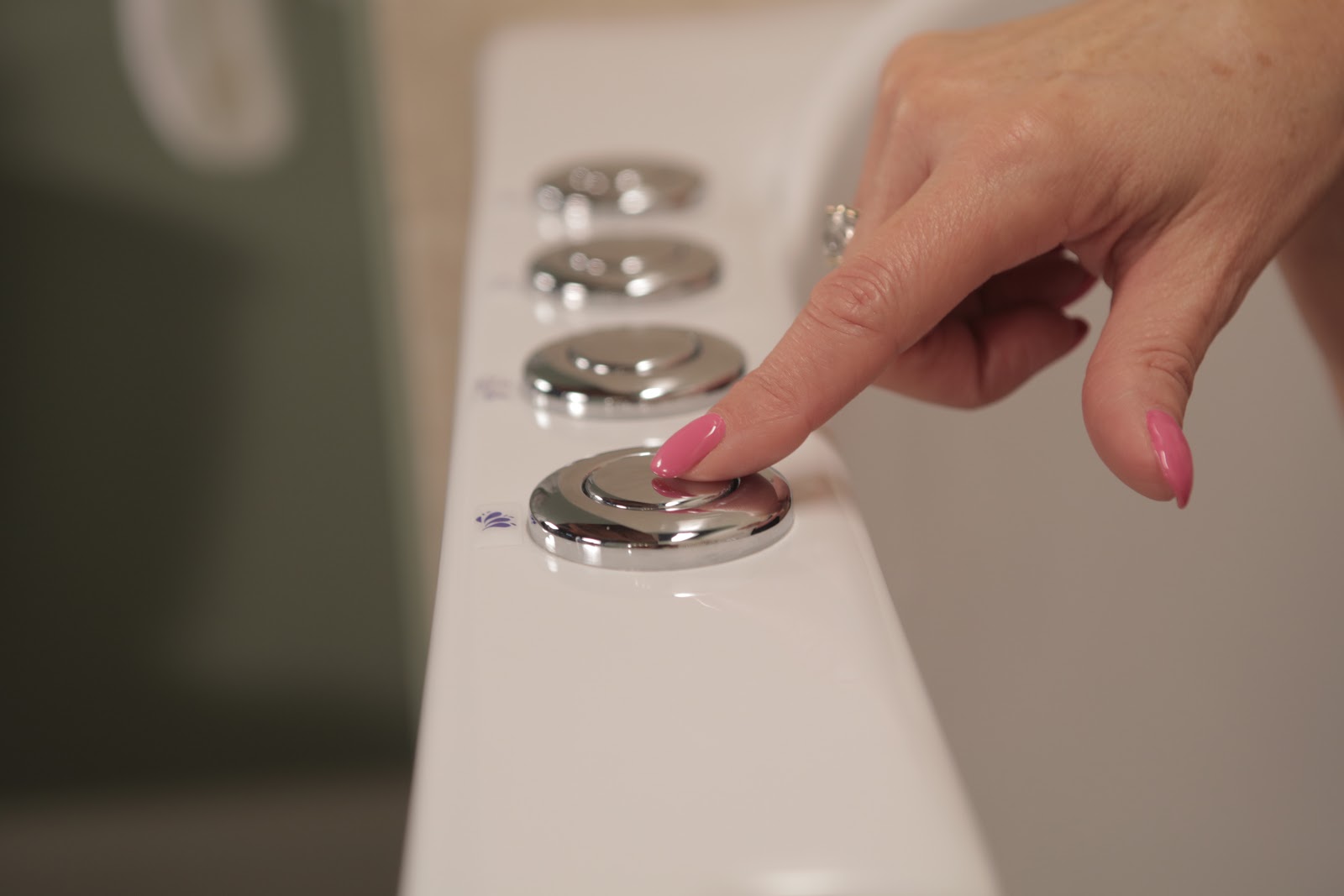



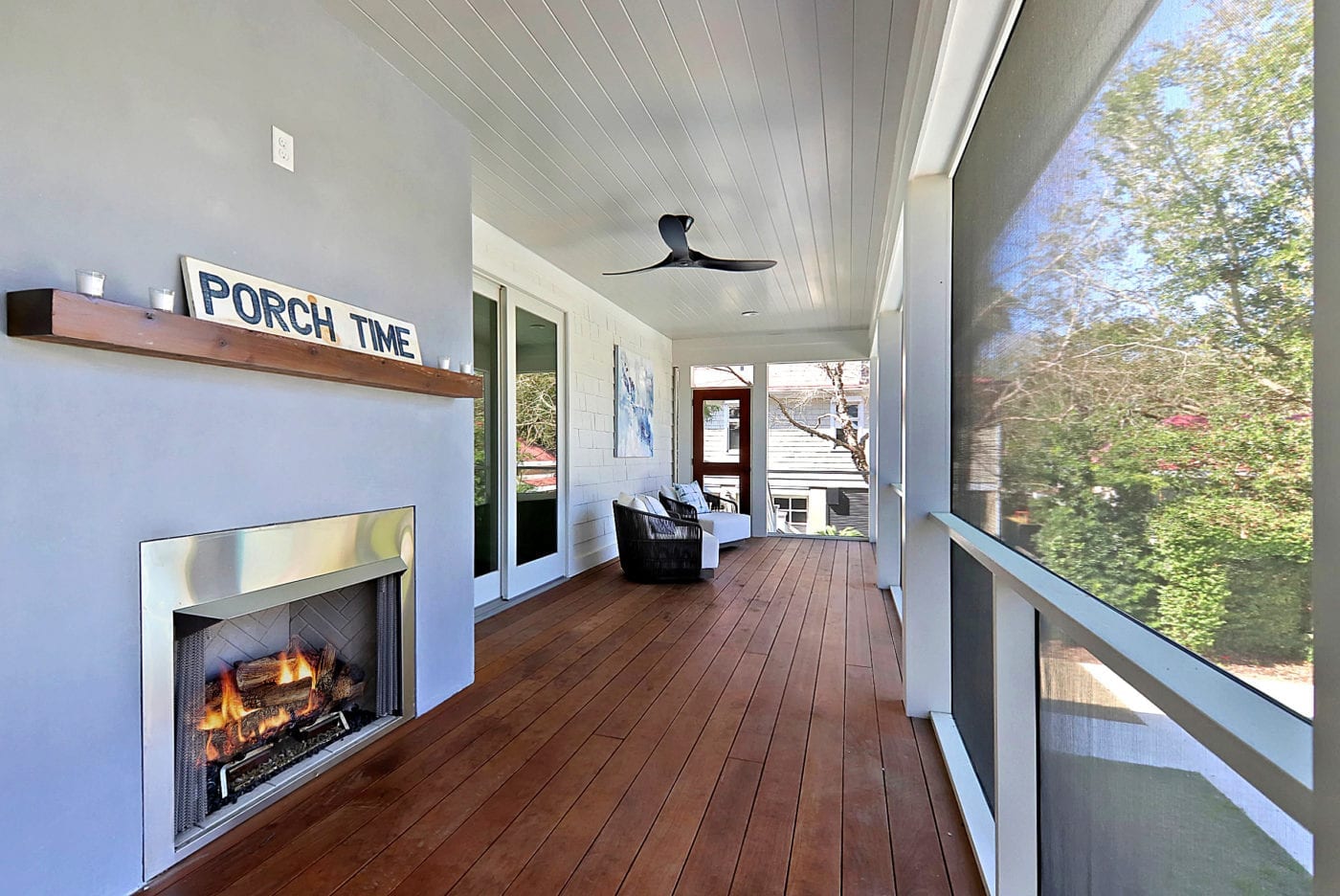

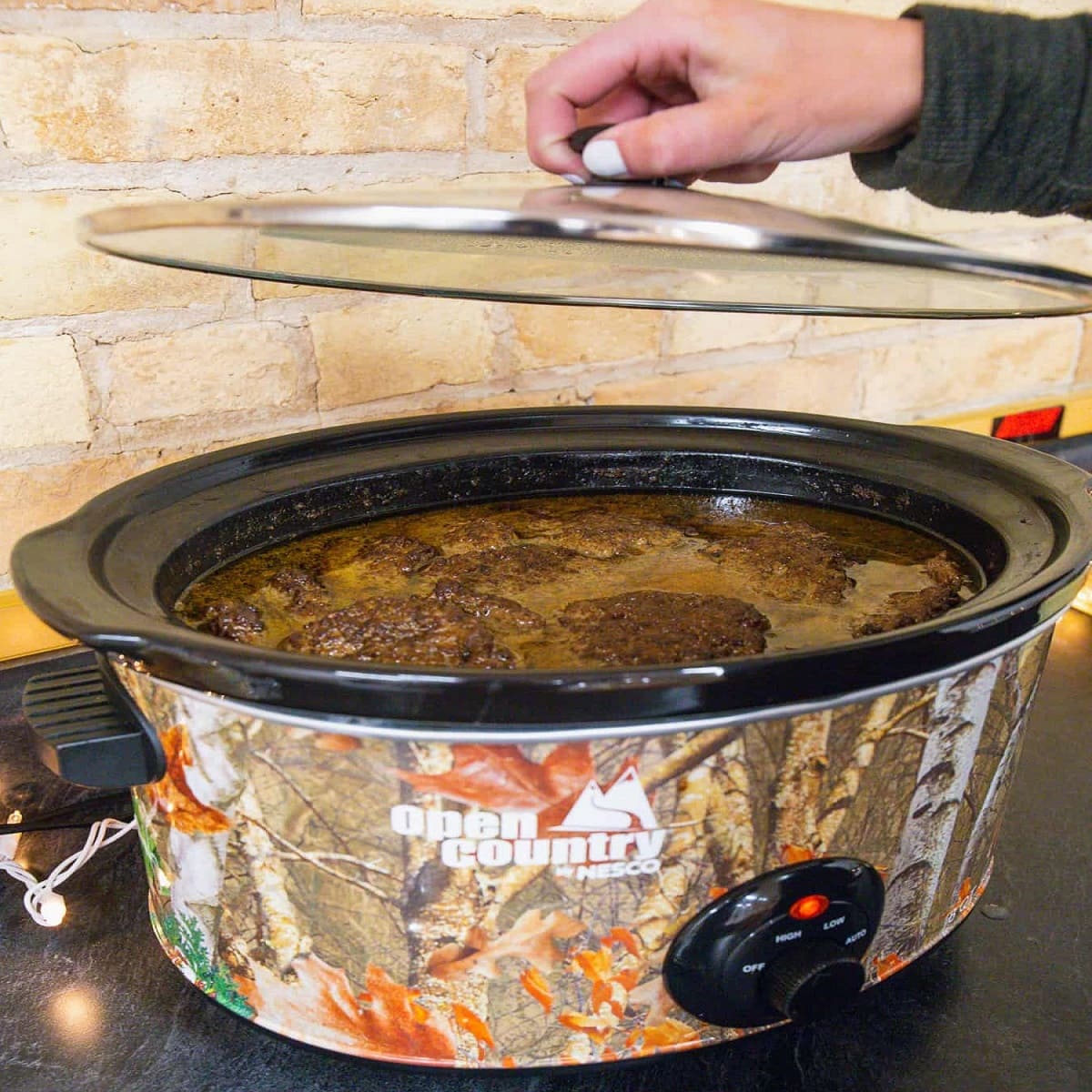

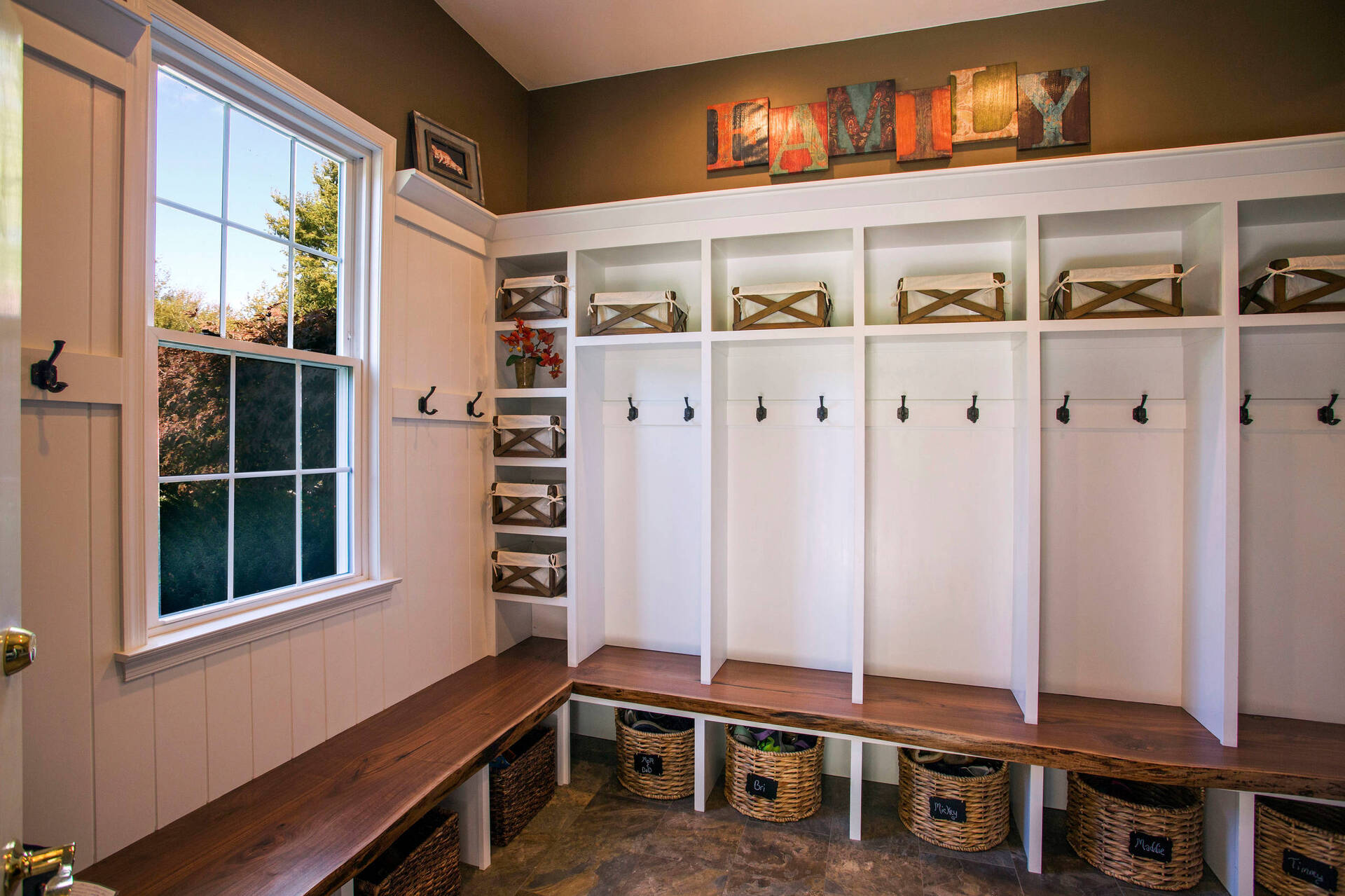

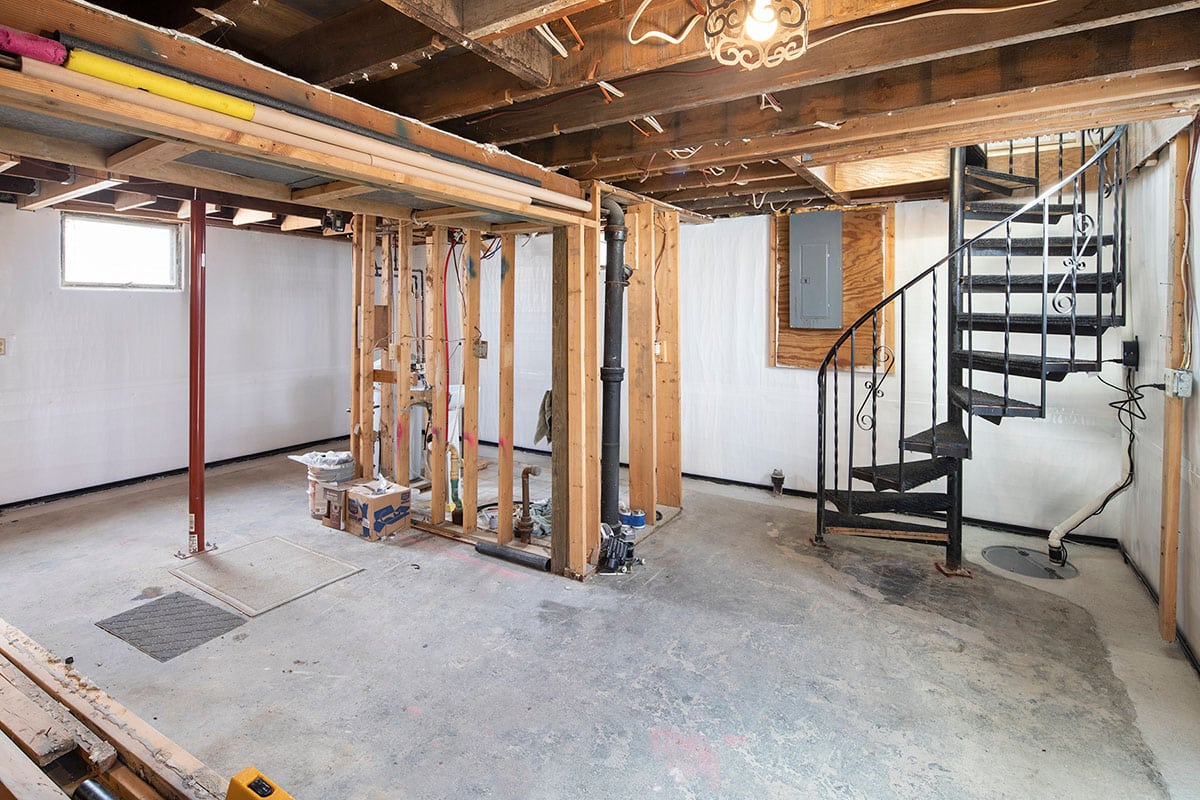
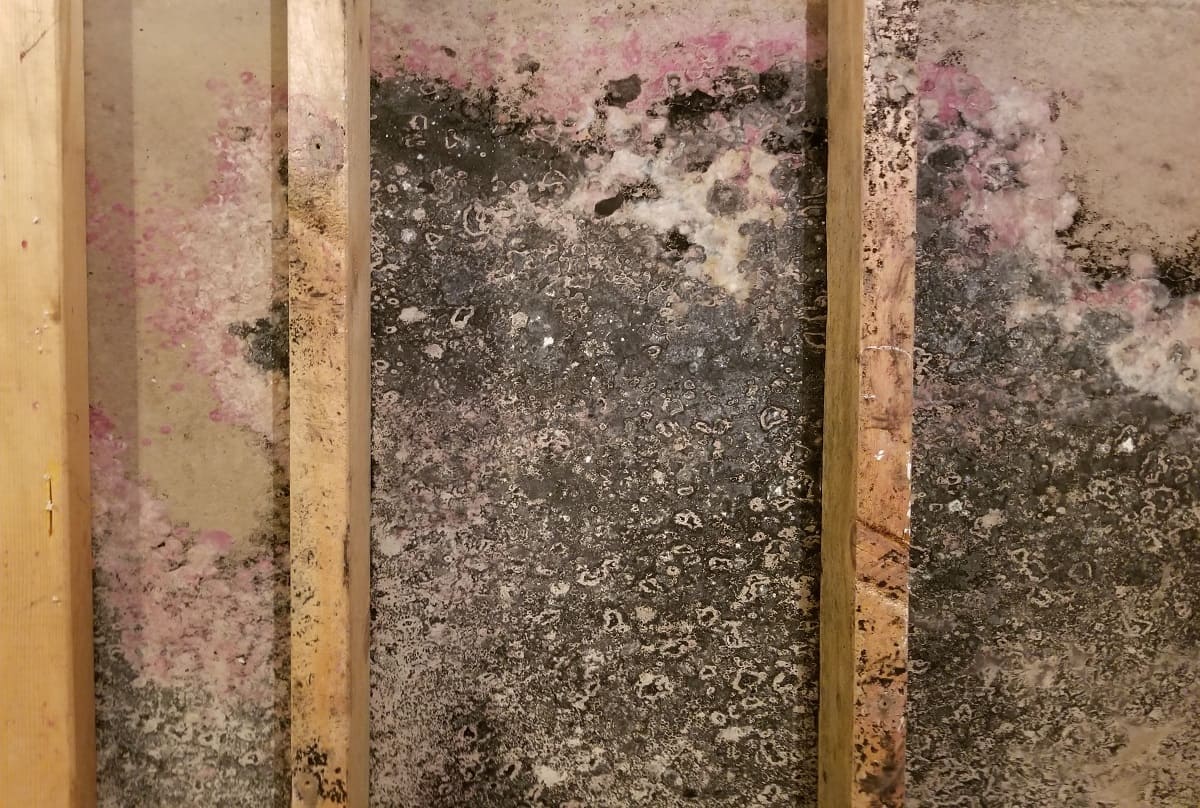

0 thoughts on “How To Keep Basement Warm”